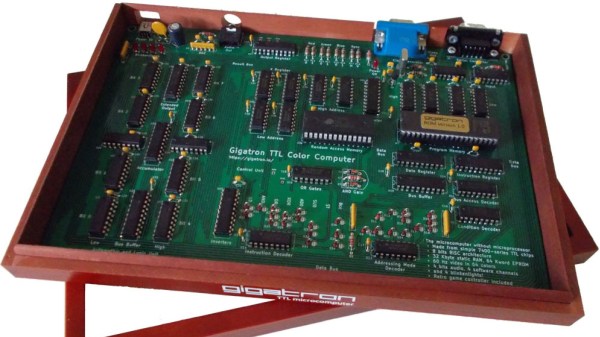Join us on Wednesday, July 15 at noon Pacific for the Back to Basics Hack Chat with Simplifier!
Stay in the technology business long enough and eventually you’ll have to face an uncomfortable question: “Have I built anything permanent?” Chances are good that most of us will have to answer in the negative. For all the flash and zazzle we put into our projects, and for all the craftsmanship we try to apply to our systems, all of it is built on a very fragile foundation of silicon that will be obsolete within a decade, held together by slender threads of code in a language that may or may not be in fashion in a year’s time, and doesn’t even really exist in anything more tangible than a series of magnetic domains on a hard drive somewhere.
Realizing you’ve built nothing permanent is the engineer’s equivalent of a midlife crisis, and for many of us it sets off a search for an outlet for our creativity that we can use to make things that will outlast us. One hacker, known only as “Simplifier”, turned his search for meaningful expression into a quest to make technology better by making it more accessible and understandable. His website, itself a model of simplicity, catalogs his quest for useful materials and methods and his efforts to employ them. He has built everything from homebrew vacuum tubes to DIY solar cells, with recent forays into telecom tech with his carbon rod microphone and magnetostrictive earphone.
In this Hack Chat, Simplifier will answer your questions about how turning back the technology clock can teach us about where we’re going. Join us as we explore what it takes to build the infrastructure we all take so much for granted, and find out if there’s a way to live simply while still enjoying a technologically rich life.
 Our Hack Chats are live community events in the Hackaday.io Hack Chat group messaging. This week we’ll be sitting down on Wednesday, July 15 at 12:00 PM Pacific time. If time zones have you down, we have a handy time zone converter.
Our Hack Chats are live community events in the Hackaday.io Hack Chat group messaging. This week we’ll be sitting down on Wednesday, July 15 at 12:00 PM Pacific time. If time zones have you down, we have a handy time zone converter.
Click that speech bubble to the right, and you’ll be taken directly to the Hack Chat group on Hackaday.io. You don’t have to wait until Wednesday; join whenever you want and you can see what the community is talking about.


















